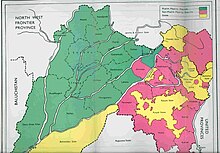Balloki Headworks
Village Balloki, located in Tehsil Pattoki, District Kasur, has a rich and diverse history spanning centuries. Here's a brief overview
- Ancient Era: The region around Balloki was part of the Indus Valley Civilization, with archaeological sites nearby.
- Mughal Era (16th-18th centuries): Balloki was founded by the Sandhu Jutt tribe, who were loyalists of the Mughal Empire. The village became a key center for agriculture, trade, and commerce.
- Sikh Era (18th-19th centuries): During the Sikh rule, Balloki remained an important agricultural hub and was known for its cotton and wheat production.
- British Era (19th-20th centuries): The British built canals and irrigation systems, further boosting Balloki's agricultural significance.
- Modern Era: Today, Balloki continues to be an important hub for agriculture, with crops like sugarcane, wheat, and rice being major productions.
Throughout its history, Balloki has been home to various religious and spiritual leaders, including Sufi saints and Sikh gurus. The village has a rich cultural heritage, with many historical sites and landmarks still present today.
History[edit]

The Triple Canals project in Punjab began in 1905, soon after the completion of the Upper Bari Doab Canal (UBDC).[citation needed] Thus, it was the second irrigation project to be implemented in Punjab. It constructed three canals:
- the Upper Jhelum Canal (UJC) from Mangla
- the Upper Chenab Canal (UCC) from Marala
- the Lower Bari Doab Canal (LBDC) from Balloki.
The Upper Chenab and Lower Bari were linked at Balloki. The former brought water from the Chenab River to the Ravi River, and recharged it after depletion into the Upper Bari Canal. The Lower Bari Doab Canal then took the combined waters from the Ravi River and UCC down the Bari doab for irrigating lands.[1]
This marked the inception of the "link canal" concept, a notion aimed at transferring water from the western rivers to the eastern rivers of Punjab. It was this concept that eventually laid the groundwork for the Indus Waters Treaty between contemporary India and Pakistan.[citation needed]
A short distance to the west of Balloki village, where the Upper Chenab river met the Ravi river, the Balloki Barrage was constructed. It was the largest barrage of its kind in India at that era. It had a 1,647-foot-long weir with thirty-five 12-metre-wide steel gates for regulating the water of Ravi. The Lower Bari Doab Canal branched off on the left of the barrage.[1] This canal commenced water supply operations in 1912 and achieved full completion in 1917. It irrigated 877,000 acres of land in the Montgomery and Multan districts.[2] The total cost of the LBDC project was Rs. 22 million. It became profitable within 10 years.[2]
See also[edit]
References[edit]
- ^ a b Headrick, The Tentacles of Progress (1988), p. 192.
- ^ a b Naqvi, Indus Waters and Social Change (2012), pp. 24–25.
Bibliography[edit]
- Chaturvedi, Mahesh Chandra (2011), India's Waters: Environment, Economy, and Development, CRC Press, ISBN 978-1-4398-7283-3
- Headrick, Daniel R. (1988), The Tentacles of Progress: Technology Transfer in the Age of Imperialism, 1850-1940, Oxford University Press, ISBN 978-0-19-802178-0
- Naqvi, Saiyid Ali (2012), Indus Waters and Social Change: The Evolution and Transition of Agrarian Society in Pakistan, Oxford University Press Pakistan, ISBN 978-0-19-906396-3
